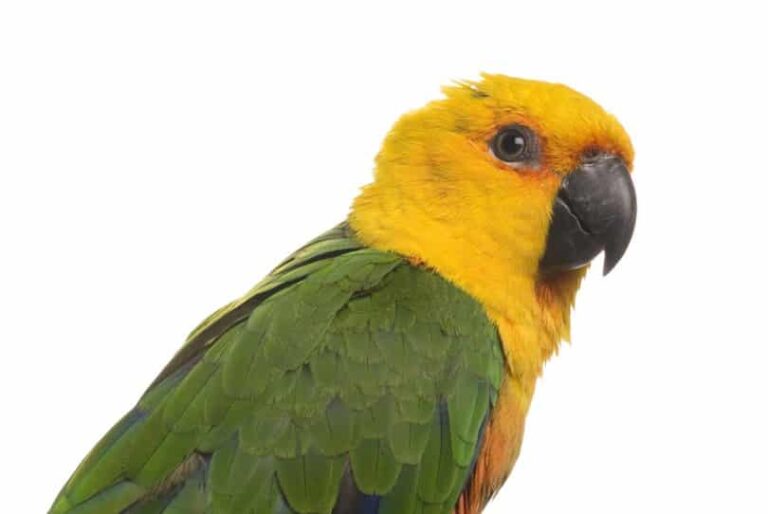Military Macaw
The Military Macaw from the Arinae subfamily and Arini tribe is a large parrot, which has recently emerged as a favorite companion bird. It can also be termed a mid-sized Macaw. This green-colored Macaw originated from the forests of South America and Mexico.

Description
These large parrots grow about 70.5 cm in height, and weigh around 900 to 1100 g. The wingspan is approximately 33 to 43 inches. This bird has predominantly a bright green colored plumage, whereas the head has a lighter shade. You can see red patches on the front part of the face along with a bare white area, which bears black lines. During flight, the blue feathers can be seen, and the red tail too consists of a blue splash at the border. The grayish-black beak is strong and large, and the iris is yellow. They look very similar to the Great Green Macaw birds.
Habitat
These birds inhabit the subtropical forests and the arid woodlands. They can be found at an elevation between 600 and 2600m, in the high mountain ranges. They also prefer lowland, and therefore, flew down to the thorny woodlands and humid forests. Different species are found from different locations, like the Ara Militaris Militaris species is found in Peru, Bolivia, Ecuador, Venezuela and Colombia. Ara Militaris Mexico species is native to Mexico and the Ara Militaris Boliviana inhabits the Bolivian region.
Reproduction
In the wild, the breeding period of the Military Macaw extends from January to March. They reach sexual maturity in 2-4 years. They mate for life, and breed in tall tree cavities. The female bird lays 1 or 2 eggs, and usually the clutch consists of 2 to 3 eggs, which she incubates for 26 days. After hatching, the young ones stay in the nest for about 3 months, and then, they will fly away from the nest.
Military Macaw At Home
Food
In the wild, Military Macaw eats fruits, seeds, nuts, berries and plants. A good quality seed diet or pellet diet should be provided. The advantages of giving a pellet mix are that the bird cannot pick its favorite seed or nut out of the mix, and it is highly nutritious. Plenty of fruits and vegetables should also be included in the diet. Occasionally, you can offer human food, as they like to have food with its owner or the whole family. Avocado and chocolate should not be given to any parrots, as it is toxic to them.
Cage
The Large Macaws should have enough space in the cage to roam easily and carry out their exercises. They like to play with their toys and climb the bars. They need perches to chew and stand on it. Hence, there should be space for all these things. The cage material should be stainless steel, and the paint should be non-toxic. Make sure it has a non chipping coat of paint. The minimum cage size should be 3 x 4 x 5 feet. The bigger the cage, the more comfortable the bird will be.
Care
Provide different types of toys to play and chew. They prefer soft wood toys to chew. You can provide a bathing dish, as they love to play in the water. Regularly, change the drinking water in the dish, and place it in such a way that it is easily accessible to these birds. The cage and the vessels should be regularly cleaned with disinfectants and mild detergents. Give enough time and attention to your pet, and take them out of the cage for some time. Regular health checkups are recommended for your Military Macaw pet.

Having discovered a fondness for insects while pursuing her degree in Biology, Randi Jones was quite bugged to know that people usually dismissed these little creatures as “creepy-crawlies”.







